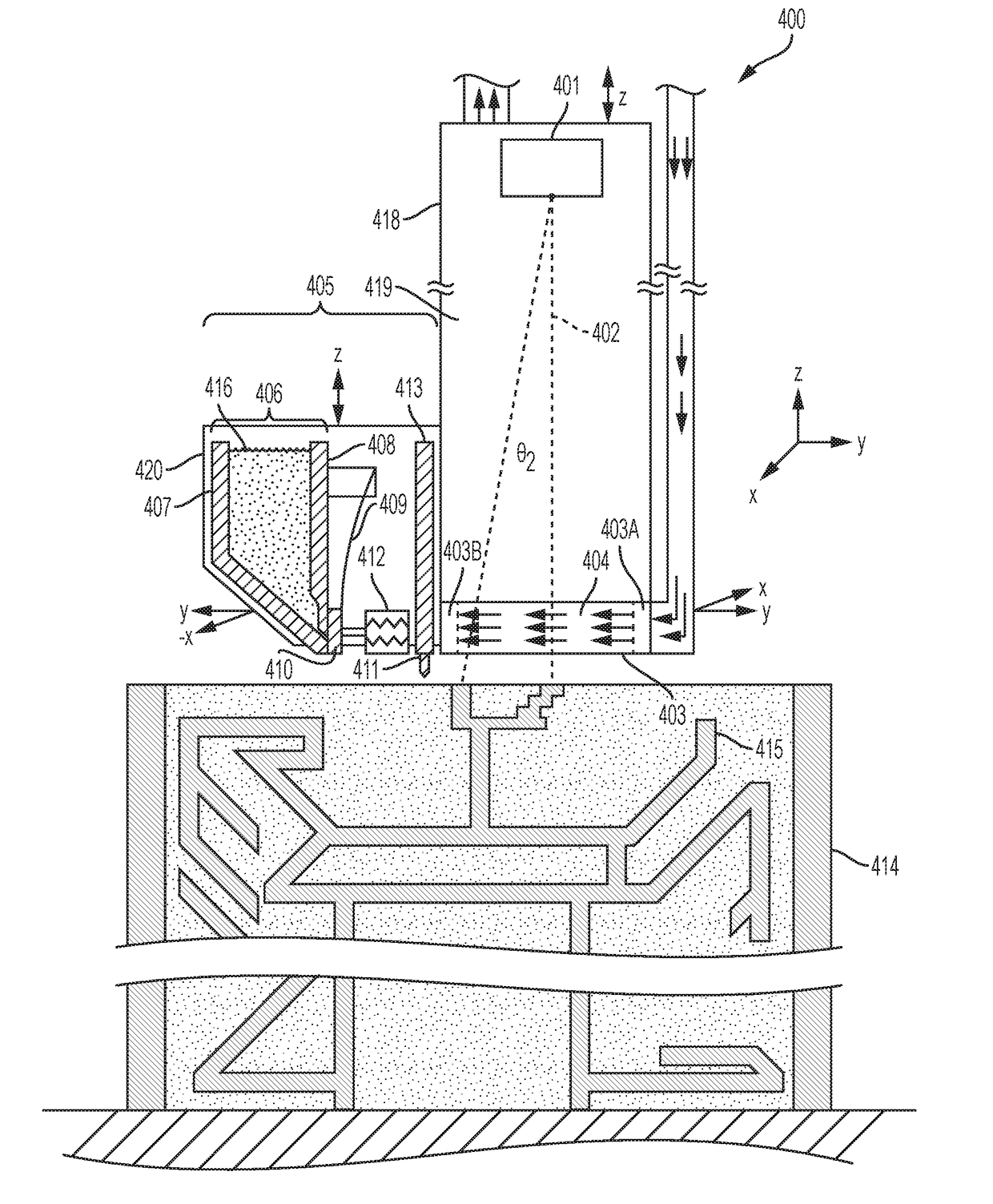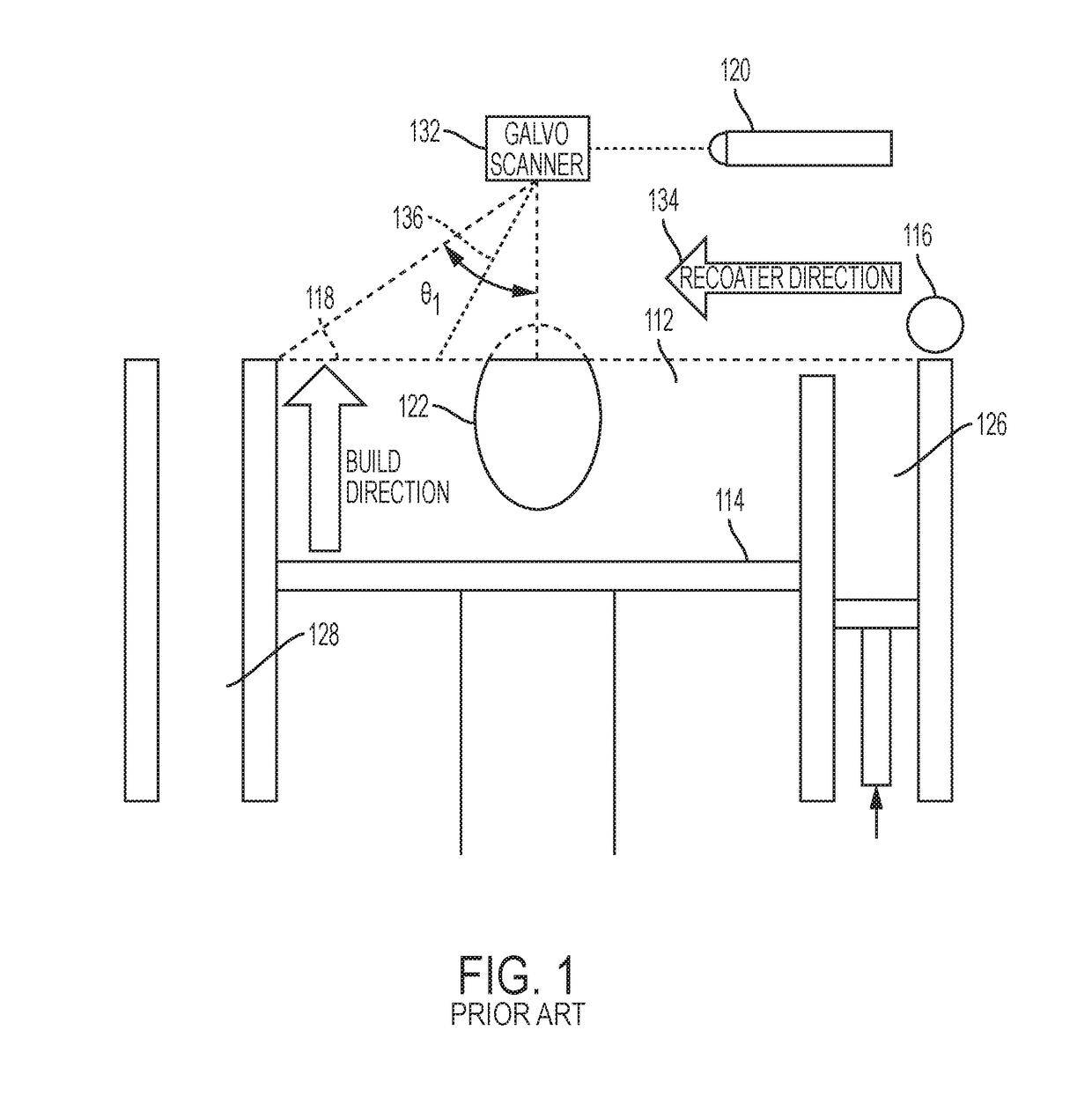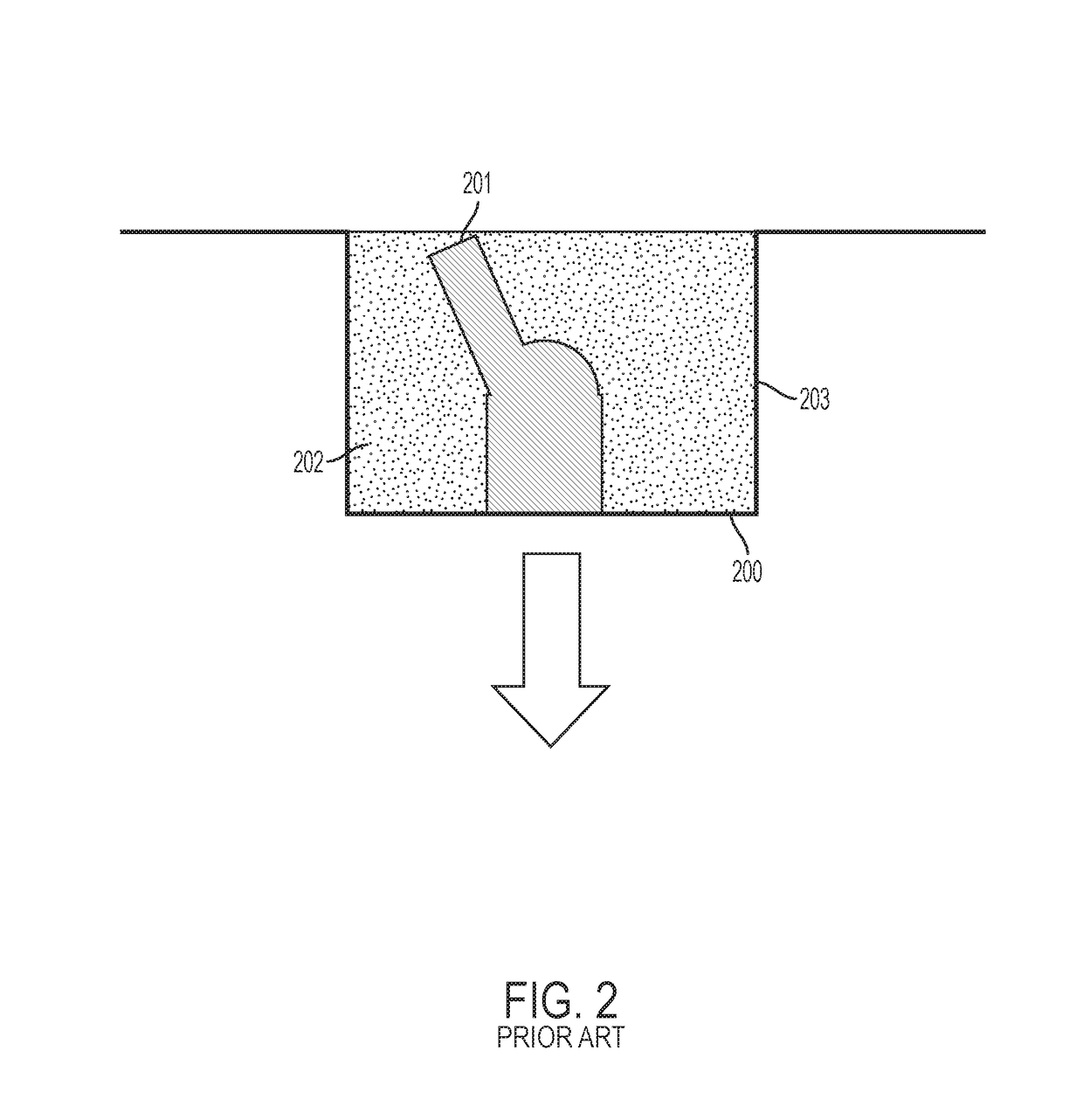Additive manufacturing using a dynamically grown build envelope
a technology of additive manufacturing and build environment, which is applied in the direction of additive manufacturing, manufacturing tools, additive manufacturing, etc., can solve the problems of complex process, limited parts being built in this type of apparatus, and the weight of powder within the build environment is one limitation of the size of parts to be buil
- Summary
- Abstract
- Description
- Claims
- Application Information
AI Technical Summary
Benefits of technology
Problems solved by technology
Method used
Image
Examples
Embodiment Construction
[0046]This detailed description and accompanying figures demonstrate some illustrative embodiments of the invention to aid in understanding. The invention is not limited to the embodiments illustrated in the figures, nor is it limited to the particular embodiments described herein.
[0047]The present invention relates to an apparatus that can be used to perform additive manufacturing, as well as methods for utilizing the apparatus to additively manufacture objects. The apparatus includes components that make it particularly useful for making large additively manufactured objects. One aspect of the present invention is a build unit. The build unit may be configured to include several components necessary for making high precision, large scale additively manufactured objects. These components may include, for example, a recoater, a gasflow device with a gasflow zone, and an irradiation emission directing device. An irradiation emission directing device used in an embodiment of the prese...
PUM
| Property | Measurement | Unit |
|---|---|---|
| scan speeds | aaaaa | aaaaa |
| angle | aaaaa | aaaaa |
| width | aaaaa | aaaaa |
Abstract
Description
Claims
Application Information
 Login to View More
Login to View More - R&D
- Intellectual Property
- Life Sciences
- Materials
- Tech Scout
- Unparalleled Data Quality
- Higher Quality Content
- 60% Fewer Hallucinations
Browse by: Latest US Patents, China's latest patents, Technical Efficacy Thesaurus, Application Domain, Technology Topic, Popular Technical Reports.
© 2025 PatSnap. All rights reserved.Legal|Privacy policy|Modern Slavery Act Transparency Statement|Sitemap|About US| Contact US: help@patsnap.com



